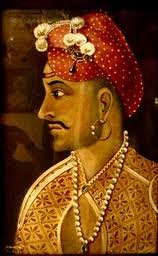| Siege of Delhi (1760) | |||||||||
|---|---|---|---|---|---|---|---|---|---|
| Part of Afghan-Maratha War | |||||||||
 | |||||||||
| |||||||||
| Belligerents | |||||||||
| | Durrani Empire | ||||||||
| Commanders and leaders | |||||||||
| | Yakub Ali Khan | ||||||||
| Strength | |||||||||
| 70,000 combatants 300,000 including camp followers (non-combatants [2] | Unknown | ||||||||
The Capture of Delhi, fought in 1760, pitted the forces of the Maratha Empire against those of the Durrani Empire led by Yakub Ali Khan. The Maratha army was commanded by Sadashiv Rao Bhau, a prominent military leader and the brother-in-law of the Maratha Peshwa Balaji Baji Rao. The Durrani army, on the other hand, was led by Yakub Ali Khan, a trusted general of Ahmad Shah Durrani, the founder of the Durrani Empire. [3]